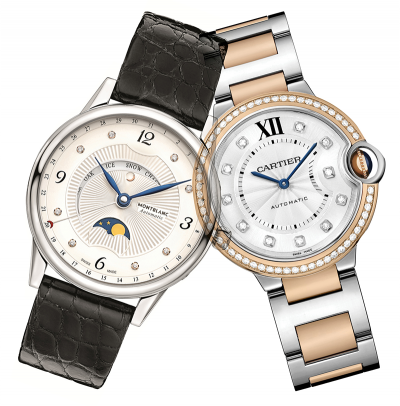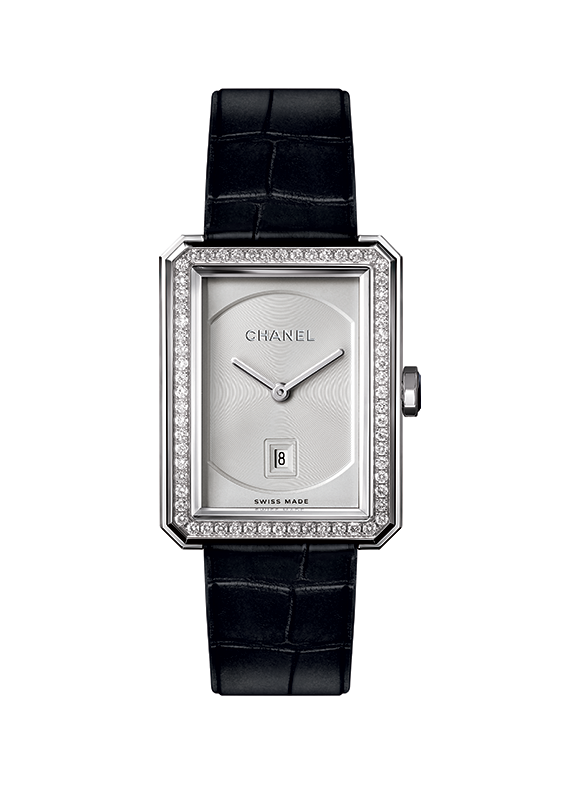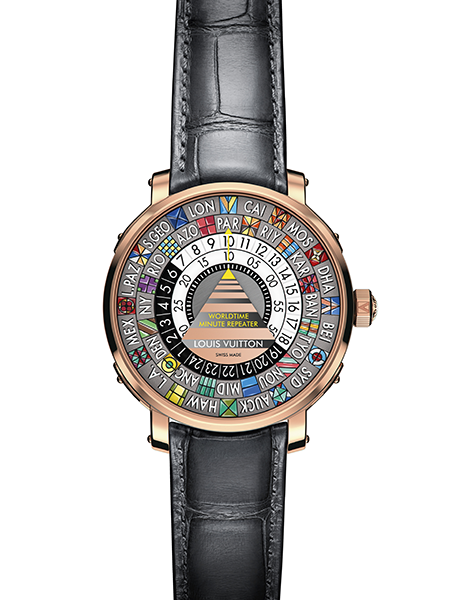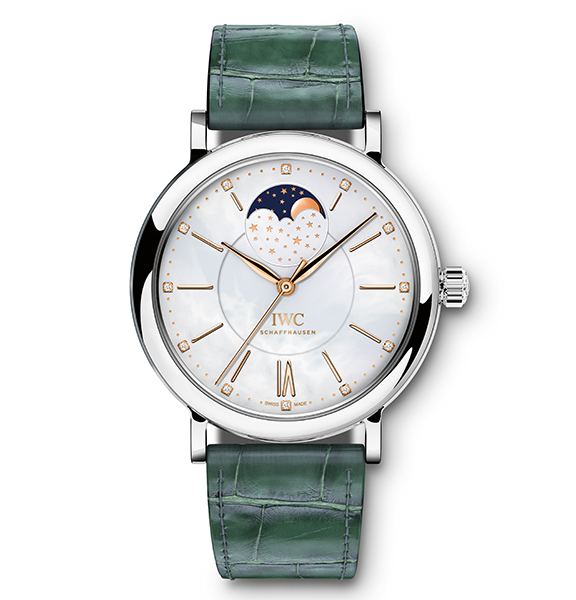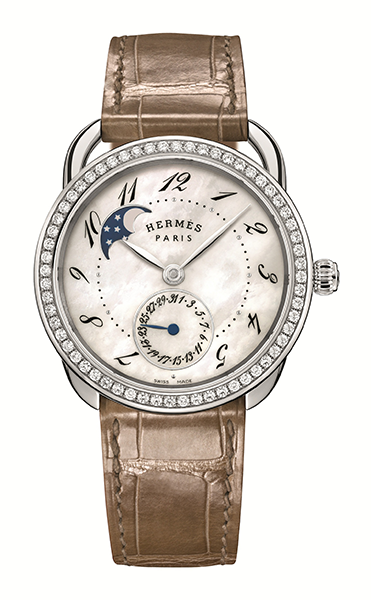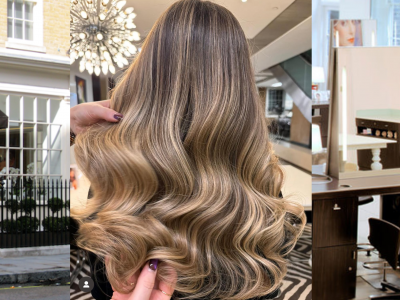In the exquisite private dining room of London’s Mandarin Oriental Hotel, a group of smartly dressed women chat animatedly over lunch. Talk flows around family, current affairs and the food. They could be a group of socialites organising a charity event or friends celebrating an occasion. But there are clues — most of them are wearing beautiful watches and terms such as “chronograph” and “moonphase” punctuate their conversation.
Changing Time: Women with a penchant for men's watches
9th March 2017
With confidence and success, women are acquiring tastes traditionally associated with men, as the latest trends reveal
These are members of Women in Watches, a two-year-old organisation set up by women in the business, as well as journalists, PRs, retailers and collectors who promote it, so they have a discussion forum and meeting place in the still male-dominated industry. At ease discussing the purpose and aesthetics of the “complications” (the extra functions) their watches display, these professionals have an acute appreciation of the craft, ingenuity and precision involved in creating such pieces and, naturally, have a greater-than-average knowledge of how they work. It’s a trend that founder Larissa Trew has seen grow since the group started.
“Until last year it felt as if the complications from top brands appealed only to a small group of women, but that’s changed. We’ve had more women contacting our online magazine Eve’s Watch (eveswatch.com) to ask about them. I’ve also noticed friends taking an interest and talking more knowledgeably. Horological toys are not just for the boys any more. I hear about women walking into boutiques and coming out with a complicated piece. And they’re not all Russian.”
Borrowing your partner’s oversized, sporty chronograph to show you’re as tough as your male colleagues is as outdated as a shoulder-padded suit
Increasingly, women buying a watch for themselves, or suggesting a gift choice, are going for models where function is as important as form, especially at the top end. Now that a steel case trimmed with diamonds is the default formula for a good-quality but accessible watch, prestige brands have moved on to gold, often with complications rather than lots of diamonds. This is particularly so in Britain, which, according to the Federation of the Swiss Watch Industry, is now the fastest-growing market for quality Swiss watches, with sales up by almost 20 per cent in the first 10 months of last year. Within that, says the Aurum Group, owners of Watches of Switzerland, women’s mechanical watches (as opposed to quartz) are the quickest-growing area, up from half to two-thirds of sales in five years.
So women are taking watches seriously and it is no coincidence that many who buy high-quality models work in areas such as finance, where prestigious watches are a male status symbol. But, even if women are choosing an extra function rather than extra diamonds, they no longer want a large watch designed for a man. Borrowing your partner’s oversized, sporty chronograph to show you’re as tough as your male colleagues is as outdated as a shoulder-padded 1980s suit. The new watches are about function, but are designed with women in mind. At the very top, this has been the case for some time. Patek Philippe, which has a female creative director, introduced its Ladies First Chronograph six years ago and the collection now includes rarities among women’s watches, such as a world time, a minute repeater and a perpetual calendar (the most popular), which take individual craftsmen many months to make and have correspondingly stratospheric price tags.
Not that this puts off well-heeled women. The brand’s UK managing director Mark Hearn recently saw a client take just half an hour to decide that the world timer was the model she wanted and to master its complex functions. He believes that businesswomen are rapidly becoming more technically adroit and as interested in the mechanics as men. In five years’ time, he thinks, there will be no difference in the complications constructed for men or women, except in size and proportion.
Meanwhile, Cartier, which has a woman in charge of movement design, is as likely to produce a woman’s skeleton version of the iconic Tank or Crash model as it is a stunningly worked jewellery watch. Historically, skeletons have been used for men’s models, but many women find being able to see the movement working hypnotically fascinating. The new Crash features what has become a signature for Cartier — openwork Roman numerals that are actually the bridges of the movement, an artistic design that women find appealing. The brand’s style and heritage director, Pierre Rainero, believes that growing female interest in the technical is outstripped by aesthetic concerns and that women would not buy a watch they did not find beautiful, however technically accomplished it is.
He knows a sober, senior Japanese businessman who wears the full-diamond, ladies’ version of Louis Vuitton’s innovative Spin Time
Other high-end brands are making complications for women, with models from Vacheron Constantin’s new, cushion-shaped Harmony chronograph and its delicately sized skeleton Traditionnelle to Glashütte’s date-window Lady Serenade and Blancpain’s Villeret Ultra-Slim Ladies, a difficult movement to achieve in a relatively small size.
Diamonds are used judiciously and usually, as at Patek Philippe and Vacheron Constantin, to soften traditionally masculine functions such as chronographs and perpetual calendars, while other models are gloriously plain in gold. Jaeger LeCoultre neatly covers all bases with the revamped Duetto, designed for the Reverso’s 85th anniversary — a plain gold with white daytime dial reverses to evening black with diamonds. Daytime diamonds are normal in the influential Far East market, but can be viewed as frivolous in Western boardrooms, according to Rebecca McDermott, Northern European brand director at Zenith, which has women’s complications such as moonphases and chronographs in diamond-bezel and plain versions. Subtle diamonds as hour markers or a narrow bezel always work, she believes, and are often bought by women as a statement that they see no need to conform to old-fashioned, male-imposed values, but can afford and understand a feminine watch that is complex and decorative.
Zenith’s entry to the field is important: as a rather more accessible brand, it is bringing the new, complex woman’s watch to a wider market. Likewise Montblanc; its new Bohème range includes a gold perpetual calendar and the innovative Moongarden, in steel, which features the traditional names for the phases of the moon. The emphasis on moonphases is also significant — it is increasingly seen as a woman’s function because of its beauty and scope for embellishment. Zenith’s minimalist Elite Lady Moonphase, Hermès’ beautiful Arceau Petite Lune, Piaget’s gently oval Limelight Stella and IWC’s Portofino Automatic Moonphase are superb examples.
The Portofino underlines another growing trend, towards a continuum of style from men’s to women’s watches, where models are not designed as unisex and it’s unpredictable which gender takes to them. In theory, IWC does not design for women, though the moderately sized Portofino is photographed on them and the diamond bezel intended for them, yet in the Far East some men buy the diamond version and the plain has sold to Western women. When Cartier launched the Ballon Bleu, it was intended for men, but female demand for a smaller, remodelled version has made it a smash hit. Chanel’s sporty J12 has always attracted men and the brand sees a similar future for the refined new Boy.Friend, based on a rectangular 1930s men’s dress watch, but with subtly feminine curves on the dial. Currently simple, it will have complications added to it that will appeal to both genders.
Women no longer borrow men’s watches; they make them their own. When Piaget launched the Altiplano 900P two years ago, it was billed as a man-appealing, technical marvel — the thinnest mechanical watch ever. With its open movement and eccentric dial, it is also a fantastically elegant design, which women love.
Well-priced German brand Nomos launched the Minimatik with its own ultra-slim movement last year, again intended for men or at least unisex, but female demand for the design has resulted in a stunning, champagne-dialled version with neon orange details that will be on many women’s summer wishlist. Louis Vuitton intended its new and amazing Escale World Time as unisex, but its brightly coloured symbols (based on vintage luggage insignia) and ease of use, have made it a hit with travelling businesswomen. No surprise here for the brand’s watch and jewellery managing director Hamdi Chatti; he knows a sober, senior Japanese businessman who wears the full-diamond, ladies’ version of Louis Vuitton’s innovative Spin Time. He believes that both watches are bought by either sex firstly for their beauty, but when even jewellery timepieces sell to men, the watch world gender game no longer has any rules.
